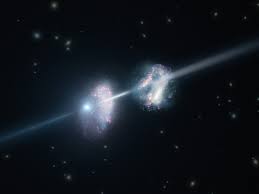Gamma Ray Burst:

A rare astronomical event involving a compact binary merger emitting long Gamma Ray Burst (GRB) twinned with a kilonova emissions was reported.
- This never before scientifically accepted or proven combination was also confirmed by India’s largest optical telescope, Devasthal Optical Telescope (DOT).
- The GRB lasted for over 50 seconds and identified as GRB211211A.
- Kilonovae occur when two compact objects, like binary neutron stars or a neutron star and a black hole, collide.
- Gamma-Ray Bursts are massive but extremely bright, high-energy short gamma radiations which get released when massive stars collapse or die in the Universe.
- They are the most powerful events in the universe, detectable across billions of light-years.
- A light-year is the distance a beam of light travels in a single Earth year, or 9.5 trillion kilometers.
- Astronomers classify them as long or short based on whether the event lasts for more or less than two seconds.
- Long GRBs observe long bursts in association with the demise of massive stars.
- When a star much more massive than the Sun runs out of fuel, its core suddenly collapses and forms a black hole.
- Short GRB, on the other hand, forms when pairs of compact objects such as neutron stars, which also form during stellar collapse spiral inward over billions of years and collide.




